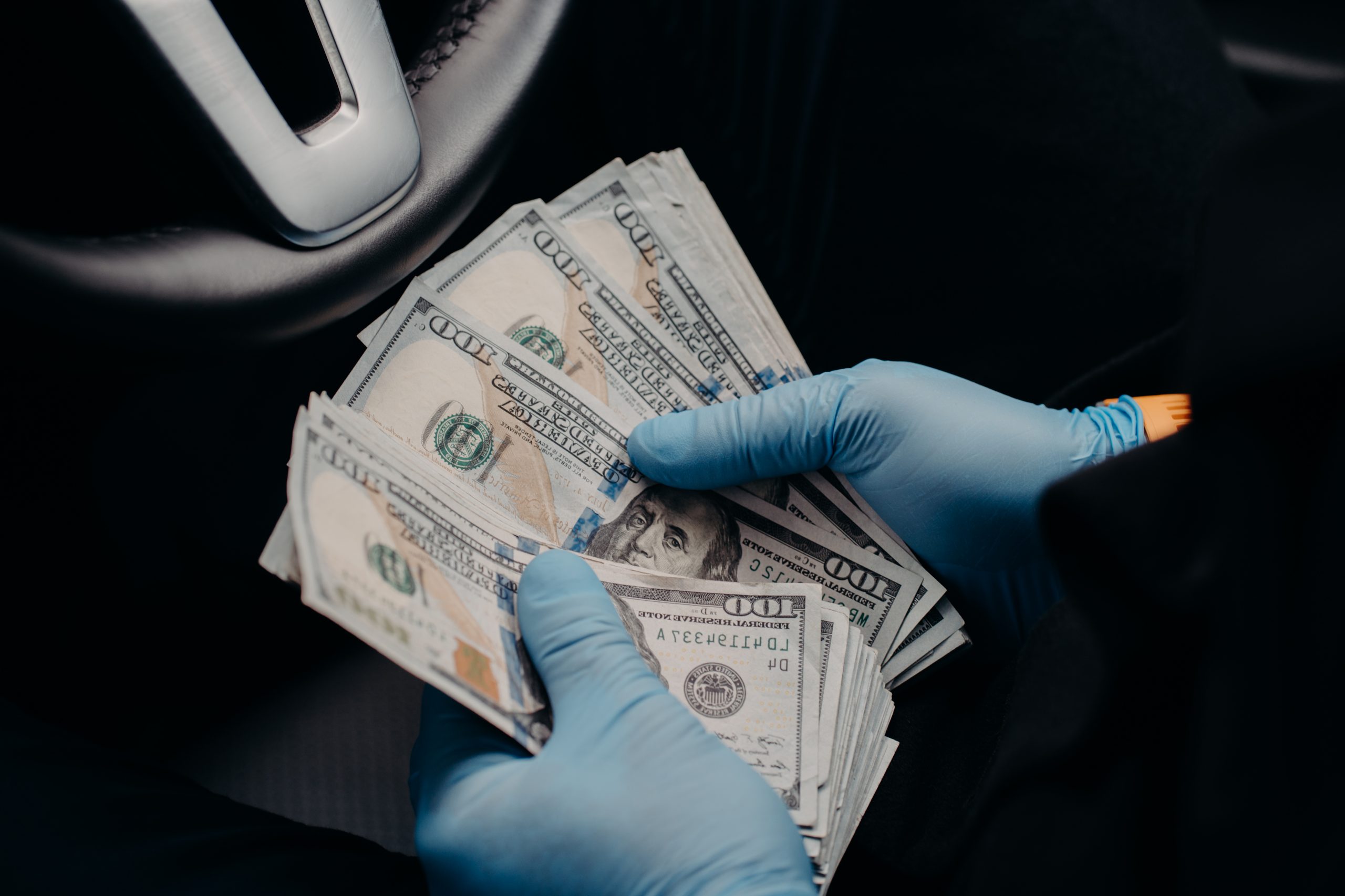Wrapping up the service experience.
You want to make sure your customers are ecstatic about the service you’ve provided.
Previously we’ve talked about the majority of people buying for emotional reasons. They then justify their purchases after with facts. So here we are at the end of the service experience with an expensive bill for our customer. We need to be able to justify their expense for them.
Before you present this bill, update your maintenance tracking report to include all work done today.
If the customer bought a battery, show them on the report how the battery now has five more years of life to it. Or that transmission job gave it three more years of life added to it. You want to make sure you’re helping them with the justification of adding life to their vehicle.
By printing out your maintenance tracking report, you’re giving them something tangible.
Make sure to print both the before and after reports. That way they can see what changed.
While most shops are going paperless, there’s a problem with that. The problem is that customers can’t feel a coolant service. They’re driving down the road and can’t feel a transmission service. So the report is necessary. This gives them something they can see, touch, and feel that they can bring home and show their family.
An email gets buried within the hour with other emails. Your customer needs to make a conscious decision on what to do with the paper report. They bring the report home, throw it on the island for a day or two, and eventually, it gets thrown away. At least for the time they’ve kept it, they have a reminder of what you’ve done. Hopefully, they’ve kept it because they want to know when they’re services are due in the future.
One of the biggest things that we’re doing here is that you’re helping them prepare for the future.
You’re reducing the surprises caused by inspections. When the customer returns a few times, the report shows what’s been done and not due, and what is going to be due. This makes for a much more pleasurable experience.
Let’s talk about justifying the sale with the facts afterward.
I’m going to repeat this again because it’s so important to understand if you’re in sales.
The majority of us buy for emotional reasons. We only justify our purchases with the facts afterward.
I talked about buying some fancy new rims for your vehicle and having to go home and justify your purchase to your spouse. It’s only then when you start talking about fuel efficiency, handling, and safety. Usually, it’s just plain old BS, but you’re trying to justify your emotional purchase. You just wanted your vehicle to look good!
When your customer leaves the shop they are literally a block or two away trying to justify what they paid for. In their head their asking “what did I just spend a thousand dollars on at the shop?”
You want to implant those reasons in their head so they’re not left asking.
This is why the service tracking reports are so powerful. You get to show them the facts. Show them the life added to their vehicle. Show them how long those services are good for.
Right after the bill has been paid, you hand them their service tracking reports. One is the before report you showed them at the beginning. The other is the after report, which has the services you just performed. Compliment them on the good decision they’ve made. Tell them how they’ve added “four years of life to that battery” or “three years to that transmission service”. Help them quantify the results of their good decision. Provide them with that report to bring home.
Scheduling the next oil change.
I get a little bit of kickback from shops about this and I want to get into the impact this can have and why it’s so important.
When I teach shops how to do this I often get excuses about how they’ve done this before and it wasn’t received well. They say customers didn’t like it. They booked them and the customers forgot.
It’s very important to not have an all or nothing attitude about this. How many things in life work 100% perfect every time? The fact is I would be surprised if even fifty percent of your customers allowed you to prebook the oil change. Maybe it’s only twenty or thirty percent.
Let’s do the math
 Let’s say you only do a hundred cars a month and twenty percent say yes. That’s twenty cars a month that you’re not spending marketing dollars on to get back in the shop! When you consider most shops spend over $100 for every new customer acquired, that’s a bargain. You’ve potentially saved $2000/month in marketing costs!
Let’s say you only do a hundred cars a month and twenty percent say yes. That’s twenty cars a month that you’re not spending marketing dollars on to get back in the shop! When you consider most shops spend over $100 for every new customer acquired, that’s a bargain. You’ve potentially saved $2000/month in marketing costs!
Most customers extend the wait before their visit longer than they should. You put that oil change sticker on their windshield. Then they go another 500-1000 miles past their oil change. That extends their visits a month or two longer.
By prebooking and reminding them, you will have a great impact on your car count. It will make it more affordable maintaining the car count you want. It’s also going to be easier to increase your car count.
The worst thing a customer can say is “no.”
Present the report to the customer. Ask if they understand how it prevents you from ever selling them something they don’t need. They’re going to have the most affordable maintenance plan money can by.
Hopefully, they’re shaking their head and say yes.
You say: “Ok, I want to help you avoid the mistake many of my customers make. I put the oil change sticker on their windshield and after a few weeks, they see right through it. One day they look up and see that they’re a thousand miles past when they should have come in. By this point, you’ve caused irreversible damage and wear to your engine. Your vehicle will not last as long as it once would have. If you allow me to take assist you in this, I’d like to pencil you in the calendar for January 15th. My system will send you a reminder five days before, and a day before. You can call us and we can schedule for a more convenient time like the 18th or 19th.”
By explaining it this way you’re explaining how you’re taking better care of their vehicle. People will start saying yes. It will allow for a culture of clients that lets you manage their vehicles very carefully.
Make sure that all of your advisers on your team are asking to prebook the appointment. It will have a great impact on your car count.
Discussing their other vehicles
We’re now at the end of the service experience. Hopefully, everything’s gone great throughout the process and your customer is very happy.
Wrap up by asking the following:
“I just want to make sure that your service experience at our shop was a really good one. Are you comfortable and happy with everything that happened today?”
Pro Tip: You can slightly nod your head up and down when you’re asking this. This subconsciously it with their answer.
You’re going to know whether the customer has been stressed about the expense and that they haven’t been too happy. If that’s the case, you might not ask that question. You might just wrap it up and tell them to have a good day.
If you’re feeling that this has gone really well, or they gave you positive feedback, move on to the next step.
Print off the maintenance tracking reports for their other vehicles. To be more efficient, print these off ahead of time, but never show them to the customer until the end. We never want to distract them from the vehicle that’s in the shop. By waiting till the end, you’ve concluded the conversation on the current vehicle.
“While we were serving you today, I was looking at your other vehicles and I decided to print out the reports for them. I’d just like to give them to you so you know the statuses of what’s going on with the other vehicles. I can see that this vehicle has a few things that are pretty important that are due. Would you like to bring it in tomorrow or Thursday?”
This is how you can easily increase your car count. Just by asking about the other vehicles. Most shops don’t think of this. Imagine the difference if 20-30% of your customers say yes to having their other car come in. That’s a huge increase in sales dollars that you’re not paying marketing to get in the door.
Following up with the customer after their visit
After you wrap up the customer service experience, what do you do to follow up?
To be blunt, a lot of businesses suck at following up. In our mind, we have received payment and the service is done. We are at the climax of our service experience. We’re thinking “woohoo! we’ve accomplished the goal! The sale was made and the service is done”
The customer is at the opposite end of your excitement.
They’ve just dished out a lot of money and don’t quite understand the investment they’ve made. So we want to reassure them that they’ve picked the right shop to spend that money with.
A lot of shops leave it up to automation. They leave it up to automated contact to leave a text message or email and solicit a review. This is the biggest mistake you can make!
The # 1 rule to processes and automation is to improve the customer service experience.
If the process or automation doesn’t do this, it’s a failure. This includes your follow-up thank yous. The automated thank you’s are not personal and come off as insincere and self-serving.
With an automated thank you, you’re doing nothing to stand out from the crowd. I have businesses that I’ve bought from that follow up with a phone call. Even if they leave a voice mail, I’m blown away by that. They want to make sure I’m happy with the service experience and whether something has come up. I am blown away and ecstatic to leave a review.
So once you make your call, set up your automated text message or email to send a day or two after that. If you forget to make the phone call they still get the thank you email, but that extra step will blow them away. That extra service step is something they don’t get from anywhere else. What do you think the likelihood you’ll get a great review will be?
Customers that are happy don’t give you great reviews and tell other people about you. It’s customers that are ecstatic that do.




